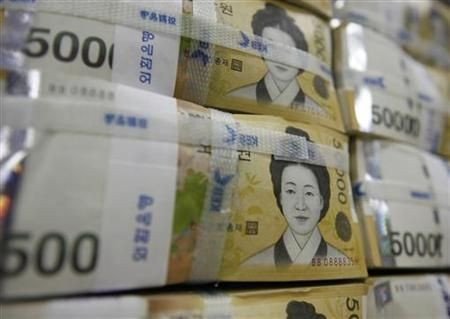South Korea’s Manufacturing Activity Continued To Contract In November: HSBC PMI

South Korea’s manufacturing activity continued to contract in November but improved to a five-month high, according to the HSBC Purchasing Managers’ Index (PMI) released Monday.
The reading of the PMI, a measure of the nationwide manufacturing activity, rose to 48.2 in November compared to 47.4 in October.
“South Korea's manufacturing sector remains on track for a gradual recovery. A key drag on business sentiment is high uncertainty over global and domestic conditions. Further signs of economic recovery in key export markets will provide clarity on the economic outlook, which may support manufacturing employment growth. We expect policymakers in Seoul to maintain its easing stance through year-end and into the first half of 2013,” Ronald Man, an economist at HSBC in Asia, said in a note.
The index remained in the contraction zone, a reading below 50. “Output and new order volumes continued to fall during the month, reflective of a difficult economic climate both at home and abroad. In each case, declines have been registered throughout the past six months, although the latest falls were both the slowest since June,” Markit said in a note.
This report comes after last month the Bank of Korea (BoK) announced its decision to keep the policy rate at 2.75 percent. Market participants feel that additional stimulus measures are urgently needed to boost the country's weakening economy.
The central bank has already noted that the growth in the U.S. has lost momentum and that the euro zone economy is contracting, with weaker exports to the major economies in turn bringing a slower growth in the emerging Asian economy this year. At the same time, the BoK is expecting the economic slowdown to ease and the country’s economy to improve moderately.
In October, the BoK cut the policy rate by 25 basis points to 2.75 percent. Market players sense that the monetary policy should be loosened again sooner rather than later though the BoK has shown a preference for moving slowly. With South Korea having an inflation rate of 2 percent in September, which is below the central bank's 3.0 percent target limit, there should be room for further policy loosening.
Meanwhile, according to the data released last week by the Korea National Statistical Office, industrial production, which measures the change in the total inflation-adjusted value of output produced by manufacturers, mines and utilities, rose 0.7 percent in October, down from a 0.8 percent increase in September on a seasonally adjusted basis.
© Copyright IBTimes 2024. All rights reserved.





















